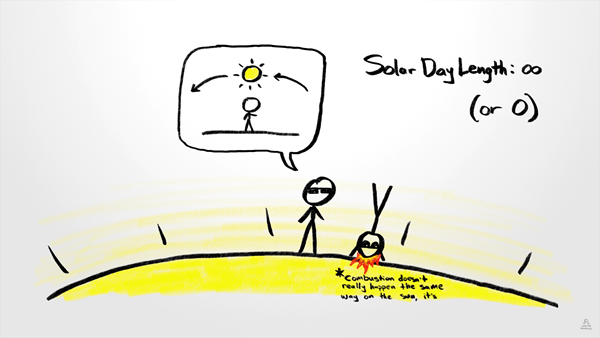As most people know, the Sun is a much more complicated celestial object than the Earth or any of the other planets. Therefore the simple question of “How long is a day on the Sun” does not possess such a straightforward answer.
As shown in this video by MinutePhysics, it depends on what one is looking for in a day to determine how long it might actually be.
The easiest answer is that of a sidereal day, a day in which the stars are the time keepers. A star can be found at one location in the sky one night and then the time it takes to find the star in that same position the next night is a sidereal day. For Earth, that is about 23 hours and 56 minutes, or 24 hours if you round up.
But even this solution to the question depends on where one is standing on the Sun as different parts of the Sun rotate at different speeds. At the equator, it would take approximately 24.5 Earth days while at the poles about 34 Earth days.
One can also factor in time dilation, as one day on Earth (86,400 seconds) would be one day plus some change (86,400.2 seconds) on the Sun due to the fact that the Sun is much more massive than the Earth. It is really up to you to decide what answer seems the most logical, as this video illustrates.










